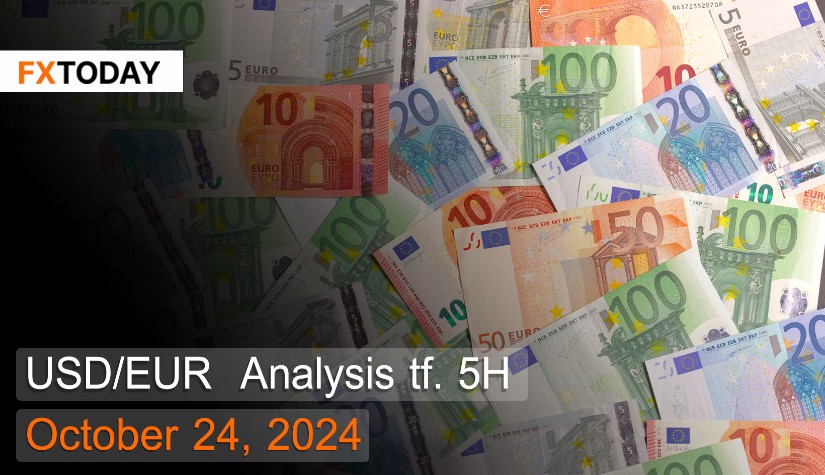The European Central Bank (ECB) decided to cut interest rates in its latest meeting.
The euro appreciated quickly due to indications that the ECB might reduce rates by only 25 basis points in December instead of 50 basis points. Additionally, October's PMI data showed that private sector business activity remained contracted, though there were some positive signs from Germany. Meanwhile, strong U.S. economic data has diminished expectations of a Federal Reserve rate cut, which has led to a stronger U.S. dollar.
The ECB reduced its policy interest rate by another 25 basis points in its latest meeting, which aligned with investor expectations and followed rate cuts in September and June. This decision was driven by an assessment that inflation may slow down as anticipated. In September, inflation dropped below the ECB's target of 2% for the first time in over three years. Although inflation is expected to rise slightly in the short term, it is projected to return to the 2% target by 2025. While wage growth remains high, it shows signs of slowing down.
The ECB also noted that any rate cuts must be based on appropriate data and aligned with current economic conditions. If there are signs of rapid inflation deceleration or ongoing economic contraction, a swift rate adjustment may be necessary. On the other hand, if inflation continues to slow at a steady pace or if the economy stabilizes, rate cuts could be delayed further.
The HCOB flash Eurozone Composite PMI index rose to 49.7 in October, just below the expected 49.8. However, the figure still points to a slight contraction in business activity. Growth in the services sector eased slightly to 51.2 from 51.4, while the contraction in manufacturing showed improvement, rising to 45.9 from 45. The manufacturing sector continues to face challenges due to weak demand, with new orders falling for the fifth consecutive month, prompting companies to reduce hiring once again.
The Eurozone’s trade surplus was 4.6 billion euros in August, the lowest surplus since the beginning of the year. This was due to rising energy prices caused by Russia’s invasion of Ukraine, which drove up energy import costs. At the same time, exports continued to decline, dropping by 2.4% year-on-year to 212.1 billion euros in August, amid a sharp decrease in sales of goods produced abroad.
Techical analysis data (5H)
Resistance: 0.9266, 0.927, 0.9277
Source: Investing.com
Buy/Long 1: If the price touches support in the price range of 0.9246 - 0.9254 but cannot break the support at 0.9254, you may set a TP at approximately 0.927 and SL at around 0.9243 or according to your acceptable risk.
Buy/Long 2: If the price breaks the resistance in the price range of 0.9266 - 0.927, you may set a TP at approximately 0.9277 and SL at around 0.9246 or according to your acceptable risk.
Sell/Short 1: If the price touches resistance in the price range of 0.9266 - 0.927 but cannot break the resistance at 0.9266, you may set a TP at approximately 0.9246 and SL at around 0.9277 or according to your acceptable risk.
Sell/Short 2: If the price breaks the support in the price range of 0.9246 - 0.9254, you may set a TP at approximately 0.9243 and SL at around 0.927 or according to your acceptable risk.
Pivot point October 24, 2024 10:28 PM. GMT+7
|
Name
|
S3
|
S2
|
S1
|
Pivot Points
|
R1
|
R2
|
R3
|
| Classic | 0.9243 | 0.9246 | 0.9254 | 0.9258 | 0.9266 | 0.927 | 0.9277 |
| Fibonacci | 0.9246 | 0.9251 | 0.9254 | 0.9258 | 0.9262 | 0.9265 | 0.927 |
| Camarilla | 0.9258 | 0.9259 | 0.926 | 0.9258 | 0.9262 | 0.9263 | 0.9264 |
| Woodie's | 0.9243 | 0.9246 | 0.9254 | 0.9258 | 0.9266 | 0.927 | 0.9277 |
| DeMark's | - | - | 0.9256 | 0.9259 | 0.9267 | - | - |
















